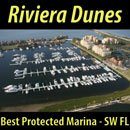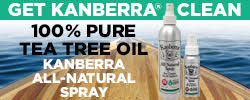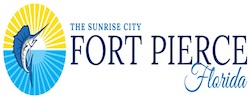from Norfolk to the Northern Gulf and Bahamas.
ABYC Tests Show LiFePO4 Batteries Are Safe – Peter Swanson
Cruisers Net publishes Loose Cannon articles with Captain Swanson’s permission in hopes mariners with salt water in their veins will subscribe.. $5 a month or $42 for the year and you may cancel at anytime.

Click here for ABYC Tests Show LiFePO4 Batteries Are Safe
Be the first to comment!
Hurricane Storm Surge Explained – NOAA

Click here for ICYMI: Hurricane Storm Surge Explained from NOAA’s Ocean Today
Be the first to comment!
Praise for Dockmaster Luke Knuttel, Riviera Dunes Marina Resort, on the Manatee River, off Tampa Bay
A CRUISERS NET SPONSOR, Riviera Dunes Marina Resort occupies the Manatee River’s northern banks, just east of the easternmost of three bridges crossing the river at Bradenton and Palmetto near charted Craig Point. See FOCUS ON for more on Riviera Dunes Marina Resort.
Click Here To View the Cruisers Net Western Florida Marina Directory Listing For Riviera Dunes Marina Resort
Click Here To Open A Chart View Window, Zoomed To the Location of Riviera Dunes Marina Resort
Be the first to comment!
Gulfport Hurricane Update – Gulfport, FL
 City of Gulfport2401 53rd Street SouthGulfport, FL 33707(727) 893-1000#8 For Immediate Release: Thursday, September 29, 2022 – 6:00PMCITY OF GULFPORT HURRICANE IANMayor Henderson Public Service Announcement
City of Gulfport2401 53rd Street SouthGulfport, FL 33707(727) 893-1000#8 For Immediate Release: Thursday, September 29, 2022 – 6:00PMCITY OF GULFPORT HURRICANE IANMayor Henderson Public Service Announcement- City Facilities including Gulfport City Hall, the Library, Casino, Recreation Center, Senior Center, Municipal Marina, and Community Development will reopen and resume normal City operations on Friday.
- City of Gulfport Public Works regular sanitation and recycling pickup services will resume on Friday. Customers scheduled for regular pick up on Thursday will be picked up on Friday. Residents are advised to place all storm debris in the right of way in the front of your house. The Public Works Department will pickup all sanitation and recycling on the first pass and all storm debris on the second pass.
- The City of Gulfport Citizens Information Call Center will close Thursday evening.
- The City of Gulfport sandbag distribution location distributed 17,000 sandbags to the community.
- Please contact Duke Energy to report a power outage. Visit, https://outagereport.
duke-energy.com/#/report- outage/home/find-account or text OUT to 57801 to report a power outage. - If you see a fallen power line or safety hazard involving Duke Energy, please call 800.POWERON (800.769.3766), or call 911 immediately. Do not touch a power line or anything in contact with it, and keep others away until help arrives.
- The Florida Department of Health in Pinellas County reminds everyone to USE GENERATORS SAFELY and avoid carbon monoxide (CO) exposure when using gas-powered appliances such as generators and charcoal or gas grills.
- Mandatory evacuation orders for Pinellas County lifted for all evacuation zones, mobile home communities, and residential health care facilities effective 9:00AM Thursday (09/29). Residents who evacuated due to the hurricane threat may return home using caution.
- All Pinellas County Schools and offices will be CLOSED through Friday. All meetings, sport will reopen on Monday, October 3.
###
City of Gulfport Hurricane Center
The first action that everyone should take is to prepare and have a hurricane or disaster kit on hand. To find out what hurricane or disaster kit is and what goes into a kit besides food and water, check out FEMA at fema.gov, the National…

Click Here To Open A Chart View Window Zoomed To the Location of Gulfport Municipal Marina
Click Here To Open A Chart View Window Zoomed To the Location of Gulfport Anchorage/Mooring Field
Be the first to comment!
Advice on Hurricanes from an Experienced Mariner, Sean Welsh
Our thanks to Sean Welsh for sharing his experience and knowledge of storm conditions in the southern regions. Current LNMs are also posted and updated daily on Cruisers Net.
For those headed south toward the FL Gulf Coast, some unsolicited advice
from a long-time disaster responder, licensed mariner, and full-time
cruiser:I know it’s late in the season and winter is soon upon us. But I suggest
lingering as far north as practical until well past October. Hurricane
season does not end until November 30, but, more importantly, you are
now unavoidably traveling into a major disaster area. Things will not be
the way you remember them if you’ve been there before, or the way
they’ve been portrayed to you if this is your first time. Some things to
keep in mind:No one will have time or resources to deal with you. Locals will be
focused on recovery and self-care. Businesses will be closed (or
destroyed), have limited hours, or limited stocks. Outsiders traveling
for pleasure can be perceived (whatever the reality) as consuming
resources needed to help residents. Or worse, as “disaster tourists.”Waterways in the area will have changed from what is shown on the
charts. Shoals will have moved or developed. Aids to Navigation will be
missing, off-station, or extinguished. The bottom can be littered with
debris including sunken vessels or entire structures. Even well after
these storms you will need to proceed with extreme caution; consider
traveling offshore if weather permits and avoiding the GIWW and OWW
altogether if possible.Expect waterway closures and security zones, due to damage or recovery.
Some drawbridges or locks may be inoperative or on reduced schedules.
Download the Local Notices to Mariners (LNMs) each week, and listen to
the Broadcast LNMs that the Coast Guard annouces every morning on VHF
16. LNMs can be downloaded here:
https://www.navcen.uscg.gov/local-notices-to-mariners-by... — the
Seventh District will be the relevant one.Obtain your fuel, water, and provisions well before reaching south Florida.
Expect communications to be spotty in many places. Cellular Internet
will be overloaded, and inoperative in some places. Even voice will have
issues. SMS typically works better than anything else cellular in a
disaster area. Make sure you have a good, working VHF in case of emergency.Marine supplies and services are likely to be unavailable. If you’ve
been meaning to pick up a spare impeller, or some extra motor oil, or
whatever, do it now. The simplest of problems can waylay you for a very
long time in a place you probably don’t want to be.It should go without saying, but do not expect to dock. Anywhere for any
reason. You might get lucky, but the chances are slim. If you do find a
place to tie up, it may not have power, water, or pumpout.
Expect to be self-sufficient once west of Stuart or south of Miami.
My thoughts are with you and with all the people affected by, and
responding to the pummeling the gulf coast is receiving. I’m pinned down
today by offshore weather, with a lot of time on my hands to watch the
news roll in; it is heartbreaking.Sean Welsh
Comments from Cruisers (2)
-
Good advice. After a major storm like Ian even traveling offshore can be hazardous for quite awhile afterward. Think of all the junk that has washed into the ocean and could be floating out at sea. If your boat successfully weathered the storm, but was within the strong wind area, be sure to give everything a careful check before going anywhere. Make sure your sailboat rigging is all good. I went up the mast after Hurricane Bob and found most of the strands in the forestay were broken, probably due to the intense vibration endured. Similarly, give any cleats and lines a close inspection and consider replacing rope that was under tremendous stress. Make sure water didn't get into your fuel. Be prepared with extra filters when you do go out.
-
Excellent advice, Sean, which of course will equally apply to cruisers traveling west through the Okeechobee or north from Marathon. Well done article.
-
LNM: USACE: Corps suspends operations at navigation locks as of 6 a.m. Wed. Sept. 28

Click here for News Release: Corps suspends operations at navigation locks as of 6 a.m. Wed. Sept. 28 due to Hurricane Ian
Erica Skolte
Public Affairs Specialist
Corporate Communications Office
U.S. Army Corps of Engineers, Jacksonville District Palm Beach Gardens
Cell: 561-801-5734
Twitter @JaxStrong
Jacksonville District Facebook:
https://www.facebook.com/JacksonvilleDistrict
Jacksonville District: A team of professionals making tomorrow better “Keep Calm and Essayons”’
Be the first to comment!
SPECIAL BULLETIN: Hurricane Science and Safety

SPECIAL BULLETIN (3 New Ocean Today Videos) Hurricane Science and Safety
National Ocean ServiceBe the first to comment!
Hurricane News and Updates – South Flordia Sun Sentinel
Evacuation orders expanded across Florida’s Gulf coast Tuesday morning as Hurricane Ian ground its way across western Cuba and headed toward a U.S. landfall that could generate devastating flooding. As a public service, Sun Sentinel’s storm coverage is free and available to all readers
HURRICANE NEWS
Florida ‘running out of time.’ Hurricane Ian crosses Cuba; tropical storm watches issued in Broward, Palm Beach
Sun SentinelSouth Florida Sun-SentinelBe the first to comment!
Use AIS To Track Whales, Not Boaters, Commenters Say – Peter Swanson
Cruisers Net publishes Loose Cannon articles with Captain Swanson’s permission in hopes mariners with salt water in their veins will subscribe.. $5 a month or $42 for the year and you may cancel at anytime.

Click here for Use AIS To Track Whales, Not Boaters, Commenters Say
Be the first to comment!










Be the first to comment!